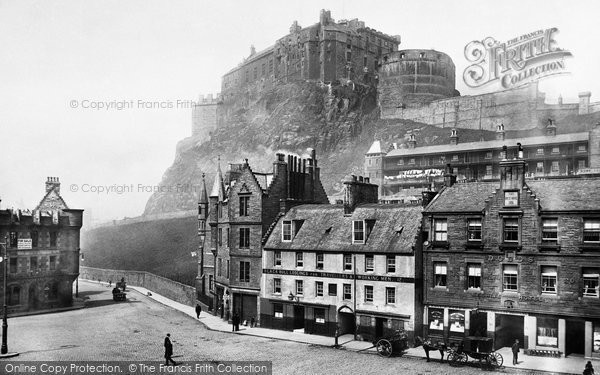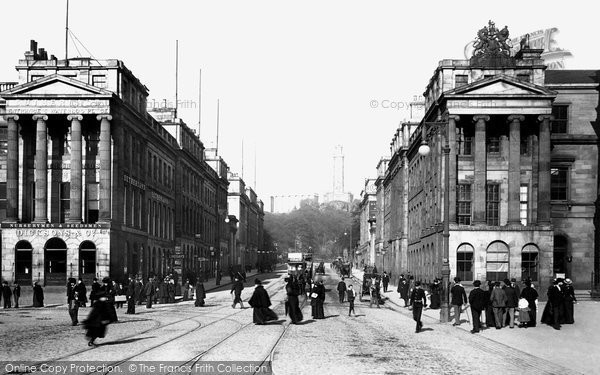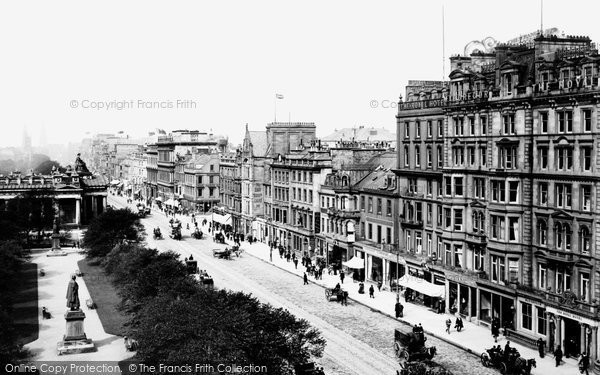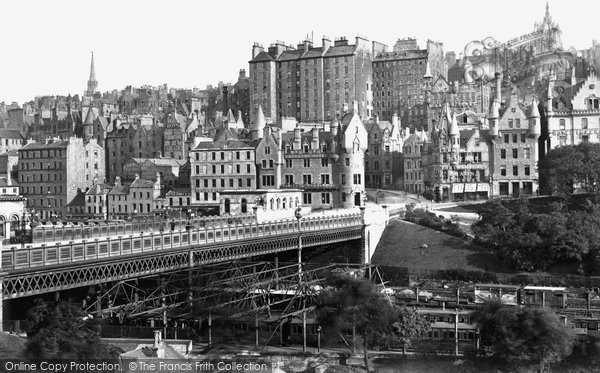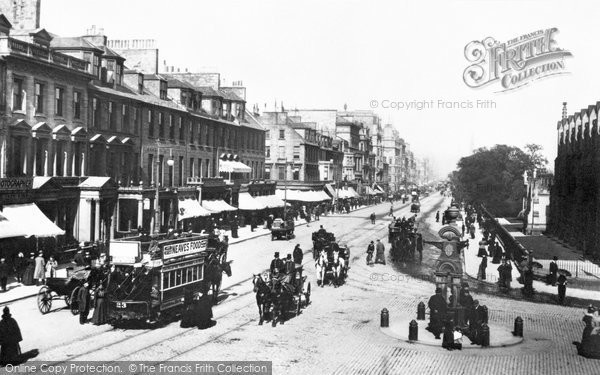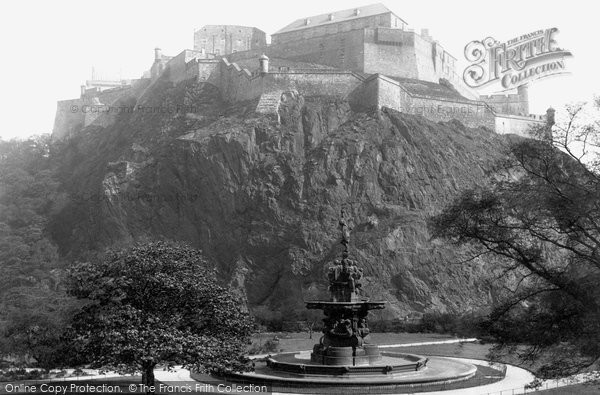Edinburgh History
The history of Edinburgh and specially selected photographs
The lively modern city of Edinburgh stands on historic foundations. By the beginning of the 7th century the site occupied by Edinburgh Castle was a stronghold of the Gododdin, but in 638 it fell to the Northumbrians, at that time the most powerful of the Anglo-Saxon kingdoms, whose territory stretched from the Forth to the Humber and to the south of the Mersey. The name of Edinburgh is thought to derive from ‘Edwin’s burgh’, as Edwin was an early 7th-century king of Northumbria.
Edinburgh Castle was one of the most advanced castles of its time; many of the natural features of the site were incorporated into the plan to make the best possible use of them.
Edinburgh Castle became the principal residence of Malcolm III and his wife Queen Margaret. The earliest surviving structure, Queen Margaret’s Chapel, dates partly from c1100. When Robert the Bruce captured Edinburgh Castle from the English in 1313 he gave orders that this chapel should be left unharmed, although all else was destroyed to prevent the English making military use of the castle in the future. The castle that we see today is, with a few additions, that built by the Earl of Morton following the siege of 1572. Norton succeeded Lennox as Regent, and took the fortress in the name of the infant James VI from the supporters of Mary, Queen of Scots. It was Morton who added the great Half-Moon Battery to the castle’s defences.
Even today Edinburgh Castle looks impregnable. However, an inherent weakness in the defences was the lack of water. The fortress is perched high on a cliff of carboniferous basalt, and the main well is 89 feet deep. Though supplies under normal conditions were adequate, excessive demand during periods of dry weather would lead to it drying up. Following the capture of the castle in 1313, Robert the Bruce ordered it to be slighted so as to render it of no further military use to the English. The well was filled in, and its location was lost until 1381.
Edinburgh has had a turbulent history, and has often been taken by the English and won back by Scottish forces. Some protection for the castle was gained by the building of the King’s Wall in 1450. After Scotland’s defeat by the English at Flodden in 1513 another wall, the Flodden Wall, was built around Edinburgh, encompassing a wider area than the King’s Wall, which shaped the confines of the city for around the next 250 years. Unwilling to build outside the safety of the walls, Edinburgh citizens built upwards, resulting in the ‘Lands’, or tenements, sometimes as many as 14 storeys high, giving Edinburgh a high-rise appearance that made it unique in Europe. The nickname for Edinburgh, ‘Auld Reekie’, came about because the city appeared to be capped by a cloud of ‘reek’ or smoke. In the late 18th and early 19th centuries new prosperity came to Edinburgh, and development took place outside the old protective walls. This ‘Golden Age’ of Edinburgh was when its magnificent Georgian architecture was built, making Edinburgh a city of gracious squares, broad thoroughfares and impressive public buildings, all within a setting complemented by public gardens and dominated by its historic castle. Edinburgh’s elegant architecture has caused it to be referred to as ‘The Athens of the North’.
The waters of Nor’ Loch once flowed over the area now occupied by Princes Street Gardens, the railway and Princes Street (named after the many sons of King George III), and together with an area of marshland formed a part of the castle and the old town’s defences. However, this loch and marshland inhibited Edinburgh’s expansion. The decision was taken in the 1770s to drain it to allow the development of the new town. When the Nor’ Loch was drained and new land was available for development, many people were unwilling to move out from the safety of Edinburgh’s walls. A reward of £20 was offered to the first person to build a house in the New Town. The first house is still standing in Thistle Court.
Edinburgh has been home to many famous names in history, both famous and infamous; great thinkers, scientists, writers, artists, engineers and churchmen have all walked these streets. One of those was the writer Robert Louis Stevenson, who based his successful novel ‘Dr Jekyll and Mr Hyde’ on the character of Deacon Brodie, who was a respectable town councillor by day and a burglar by night. Brodie lived in what is now Brodie’s Close in the city, and was executed in 1788.
Edinburgh is world-famous for two cultural events which turn the city into a whirl of colour of music, theatre, dance and street entertainment: the Edinburgh International Festival of Music and Drama (and the equally famous Fringe which accompanies it), and the Military Tattoo, both held in late August and early September each year.
Further Reading
To discover the histories of other local UK places, visit our Frith History homepage.



